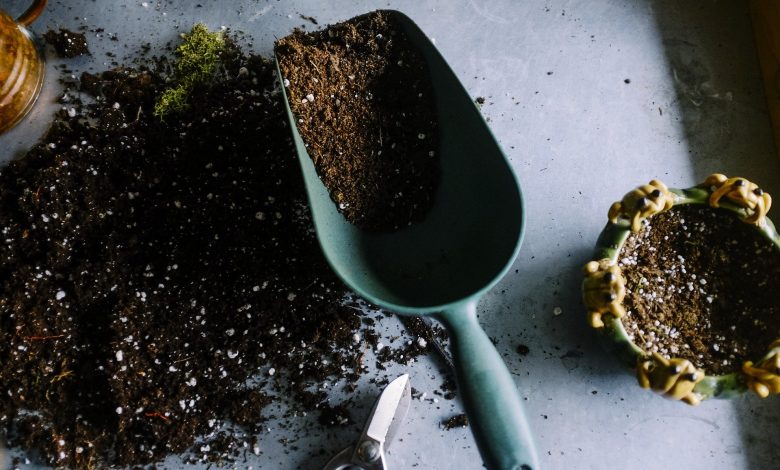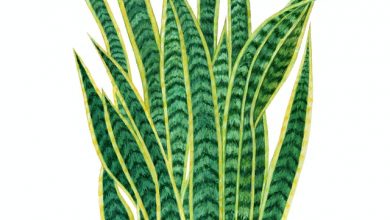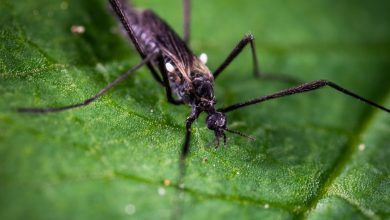What are the Necessary Macronutrients and Micronutrients for Healthy Soil?

We often don’t think beyond the nutritional details listed on the label of soil mixes, fertilizers and so forth. These details normally revolve around the core indicators – the N-P-K (Nitrogen, Phosphorous, Potassium) contents of the mixture. However, there is generally a wealth of other valuable information that many of us just gloss over. But as a gardener, you really have to take into account the different nutrients and how they can affect your soil fertility and overall plant health.
The Three Primary Macronutrients
The three primary nutrients that are measured in the soil are N-P-K, which stands for Nitrogen, Phosphorus, and Potassium. And they are the essential building blocks for your plants’ growth, which is why you’ll see them in practically every fertilizer.
Usually, a bag of balanced fertilizer will contain 10 percent nitrogen, 10 percent phosphorus, and 10 percent potassium. This is reflected on the label in the form of a 10:10:10 notation, which represents the N-P-K content.
To make your gardening life more comfortable, you can use a smart plant monitor or test strips to get a rough idea of what the nutrient balance in your soil (or home-made fertilizer) actually looks like.

Nitrogen (N)
Nitrogen is one of the foundational nutrients in plant life. It is essential in providing a healthy green color and aids in the process of creating food for the plant via photosynthesis. Similar to how humans bodies can break down food for its nutritional value, plants have that same ability to move nitrogen around within their body to ensure their health.
Plants also have something called a protoplasm, which is the living matter that allows nutrients to travel in and out of the cell. It also contains all of the generic plant material inside of its nucleus. Nitrogen is the main component found in a protoplasm. The result of a healthy protoplasm that we can observe in the garden comes in the form of a healthy rate of growth and a vibrant green color in our plants.
When a plant is deficient in nitrogen, it may begin to turn yellow because it’s not able to produce enough chlorophyll. And with chlorophyll being a fundamental part of photosynthesis which feeds the plant, it is safe to assume that, without enough nitrogen, your plant may end up starving.
Nitrogen content in your soil is also an important factor in efficient nutrient uptake, as well as determining the soil pH, both of which are essential factors when it comes to creating the ideal environment for plant life.
Phosphorous (P)
Phosphorus is closely related to the growth of every plant in your garden. It stimulates root development, increased stalk and stem strength and helps in the formation of the flowers.
During photosynthesis, a plant stores energy during a process called Photophosphorylisation. In this process, a plant would make use of the stored energy it received from light to create ATP (adenosine triphosphate) molecules. And phosphorus just so happens to be an essential piece of the ATP molecules produced.
In all living cells, ATP acts as a fuel source, or in other words, a biological currency for the exchange of energy. When a cell performs a specific action, it requires a certain amount of ATP. Without ATP, neither a plant or a human would be able to synthesize DNA or RNA, for example.
A clear indicator of a phosphorus deficiency in your plants is either an incredibly dark green color (which can also appear purple), alongside stunted growth and wilting.
Potassium (K)
Potassium serves many different roles within any plant organism. During photosynthesis, it allows the plant to breathe through tiny holes called stomata, which helps the plant in the production of ATP and regulates the availability of water in a plant, in return, activating most of a plant’s growth-related enzymes.
If the plant is deficient in potassium, the leaves of a plant may face chlorosis, resulting in yellowing or scorching around the edges of its leaves. Occasionally, the growth of the plant might be stunted, as the water uptake will have trouble circulating within the plant’s body. Therefore, the plant will face some severe challenges during a sudden heat-wave or drought.
But that isn’t the worst-case scenario. Defoliation can slowly start to appear, where the roots and leaves will begin to weaken and die off. Understanding this early indicator can save your lovely garden and, of course, save you money by not having to start over from scratch.

Other Important Macronutrients
In the last section, we analyzed the three primary nutrients that your plants depend on for healthy living. Understanding those will increase your ability to garden appropriately. However, there are four primary micronutrients that are no less important to the well-being of your green buddies. Let’s take a look at calcium, magnesium, sulfur, and silicon.
Calcium (Ca)
Plants utilize a form of calcium referred to as calcium pectate, which is responsible for maintaining the strength of their cell walls. If a plant is calcium deficient, the formation of new leaves and roots may end up uneven or disfigured. Additionally, calcium activates enzymes throughout the plant and helps coordinate the functions of different cells, including the stomata.
The primary nutrients (N-P-K) are mobile within the plant and can move about when distributing nutrients. Calcium is entirely immobile, so the plant relies on what little calcium it is getting from the soil.
Now, you may be wondering, “How is calcium distributed in the plant if it is immobile?”
When a plant breathes or is exposed to both hot and cold conditions, they distribute nutrients throughout the plant by pumping fluids through their stems and out of their stomata, resulting in transpiration, which is also how a plant gets rid of waste.
When a plant is experiencing a calcium deficiency, you’ll see very similar telltale signs to the previously mentioned deficiencies, including scorching, yellowing, and stunted growth.
Magnesium (Mg)
Magnesium is one of the most important secondary macronutrients found in plants. It increases the utilization of iron throughout a plant’s cellular structure, which is an essential ingredient in enzymes. It extends the plant cell’s life while balancing calcium and potassium levels for the proper function of the stomata.
Magnesium is also the building block in the creation of chlorophyll. Without it, plants would have difficulty maintaining their energy levels during photosynthesis. In the event of a slight excess of magnesium, a plant can move magnesium around to newer parts of the plant, which helps foster new growth.
A deficiency in magnesium will cause leaves to yellow around the edges of a leaf, before turning brown – a sign that the plant is drying and will eventually curl. However, keep in mind that magnesium content in the soil will compete with calcium during nutrient uptake. So in certain plants like tomatoes that are very calcium dependent, an excess in magnesium content could lead to a calcium deficiency.
Sulfur (S)
Sulfur can be found within the amino acids in a plant. Amino acids are fundamental to the metabolism of plants, which leads to a better yield for harvestable crops and ensures better plant health overall. Sulfur is also involved in the enzymatic breakdown and metabolism of nitrogen. In particular, the enzymatic reactions in the production of chlorophyll molecules heavily rely on on this macronutrient.
The lack of sulfur intervenes in chlorosis, but you won’t see leaves turning yellow around the edges in a sulfur deficiency. Instead, the plant will become pale, the leaves will become weak, and you may even see spots appearing all over the plant’s surface. It is very similar to someone diagnosed with anemia, as the side effects are more or less functionally related.
Silicon (Si)
For your plants, silicon serves as a natural line of defense that helps block the absorption of unneeded micronutrients which can cause toxicities and also prevents the passing of pathogenic infections, including mold, fungus, and bacteria. It is even able to fortify the cell walls and stems of the pant, making it more sturdy and durable in windy and rainy weather conditions.
Unfortunately, silicon isn’t regarded as an essential nutrient, despite its core benefits. For example, a plant experiencing a silicon deficiency will have a hard time surviving in rough environments, such as regular strong wind or heavy rainfall, which could be devastating to the deficient plant. Too much silicon, however, can potentially deform the shape of the flowers and leaves.

The Micronutrients
The common micronutrients are essentially trace minerals that can be found mixed into your soil. This group includes chloride, iron, boron, manganese, sodium, zinc, copper, nickel, and molybdenum. Micronutrients can be a beneficial or detrimental factor in your plants’ health. They serve a similar role to macronutrients in some regard, but your plants don’t require these elements in large quantities and the majority of micronutrients are disproportionately necessary to one another.
Boron
Boron is required to maintain the structure of cell walls, needed for proper cell division. It’s also responsible for regulating a plant’s hormones and the distribution of sugars created during photosynthesis. This element acts as a strengthening ingredient for the structure of the cells themselves, providing overall strength for the plant as it grows.
Boron deficiencies are rarely seen and are quite similar in terms of side effects to calcium. This is because boron is also an immobile nutrient. The symptoms of a deficient plant will show up in the form of a significant decrease in growth, and its leaves will begin to twist and curl, becoming brown and, ultimately, dying out.
Chloride
Chloride is another essential element for the development of your plants. Chloride serves the purpose of balancing potassium ions and aids in the signaling related to the opening and closing of stomata.
Additionally, chloride naturally balances the ions in plants, which also involves a heavy amount of interaction between this element and potassium, magnesium, and calcium. Lastly, it plays a vital role in the immune system of a plant by regulating the nitrate levels it receives, as excessive nitrate in a plant is often a plague, which starts to show itself in the form of slow plant growth.
A lack of chloride will usually cause wilting, excessive rooting, and deformities in the leaves and branches of your greenery.
Iron
Iron serves a similar purpose in plants as it does in humans. It allows the storage of oxygen, making chlorophyll green (in this case, identical to human’s cherry red blood as a sign of proper oxygen intake). Iron is one of the foundations for enzymes and enzymatic reactions and interactions that aid in the production of plant proteins.
When a plant synthesizes chlorophyll, it utilizes iron to create an amino acid called ?-aminolevulinic, which eventually becomes protochlorophyllide, and finally chlorophyll.
Identifying an iron deficiency in plants can be difficult because it looks quite similar to a magnesium deficiency at first glance. If you remember what a magnesium deficiency looks like, the plants will often end up paling in color before gradually dying off. When a plant has iron deficiency, it will typically be an even lighter shade of green, becoming almost a pasty-translucent white color before finally meeting the same grim end as any other serious nutrient deficiency would entail.
Manganese
Manganese is involved in photosynthesis, chlorophyll production, balancing nitrates, and regulating the distribution of carbohydrates throughout the plant. It also enhances the production of starches and plays a role in the synthesis of fatty acids.
Without manganese, plants simply stop growing and end up starving without anything to regulate the production of carbohydrates and starches. One of the first signs of a deficiency is interveinal chlorosis in the new young and budding leaves or an outbreak of necrotic spots. Manganese primarily comes from the soil, and growth defects associated with a manganese deficiency are usually the result of poor soil quality.

Zinc
Zinc is one of the most abundant nutrients in any plant that you can think of. This element is responsible for plant development, as a precursor to enzymes and proteins.
It is involved in hormone production and ensuring healthy cell division as the plant grows. Taking a closer look at zinc, it mediates a plant’s ability to respond to cold weather, takes part in carbohydrate metabolism and chlorophyll production, and is necessary for the creation of DNA binding proteins.
Zinc also provides support to your plant’s immune system through enzymatic reactions that remove free-radicals from the plant’s system.
With that said, zinc is crucial for plant and humans alike. And the reason most humans and plants are zinc deficient to some degree is due to gradual widespread decline in soil quality that has been associated with a lack of proper maintenance. Since it is a mobile nutrient, you can expect uneven chlorosis across the entire plant in the event a plant is zinc deficient. The general symptoms of this appear in the form of narrow, thin, and wispy leaves. This symptom is also incredibly apparent during a phase of stunted growth.
Copper
Copper plays a crucial role in the synthesis of lignin, the supportive tissue found in plants, primarily in cell walls. Similar to other micronutrients, it is essential in the metabolism and breakdown of nitrogen and carbohydrates, while acting as a catalyst in photosynthesis because of its conductivity and helping create the enzyme that breaks down polyphenols.
A copper deficiency results in a stark change in foliage color, where the edges of a leaf will become incredibly dark – often showing up in black, blue, and purple colors. The leaves will also become dense and hard, and take on somewhat of a metallic glossiness. Another important thing to note is that both male and female plants will lose their reproductive abilities if they lack copper.
Nickel
Nickel is a small component in an enzyme that helps plants turn nitrogen into ammonia. It prevents a buildup of urea in plants and helps in preventing toxicity and diseases.
Although nickel doesn’t play as diverse of a role in plants as some of the other micronutrients that we’ve covered, it has a very distinct and noticeable effect when a plant is deficient. The deficiency can cause the entire plant to change color to a bright yellow, and the tips of the leaves will eventually start rotting. In addition to this, the leaves will also begin to take on a rounded shape.
Molybdenum
Molybdenum is responsible for the breakdown of nitrogen and helps plants absorb potassium. Several enzymes, including xanthine dehydrogenase, nitrate reductase, and sulfite oxidase, rely on molybdenum for synthesis.
Molybdenum is a scarce micronutrient in plants. However, deficiencies are often tied to the symptoms of nitrogen imbalances. The classic symptoms are curling leaves with hints of red, pink, and orange.



